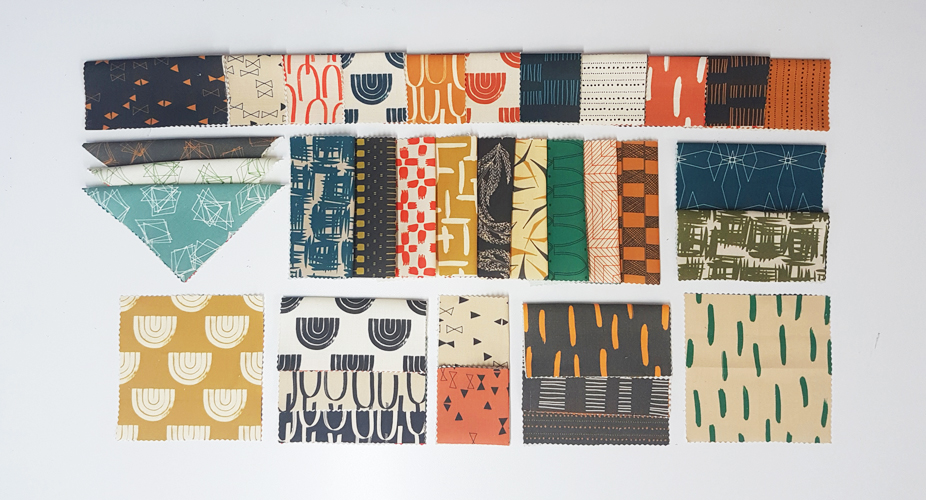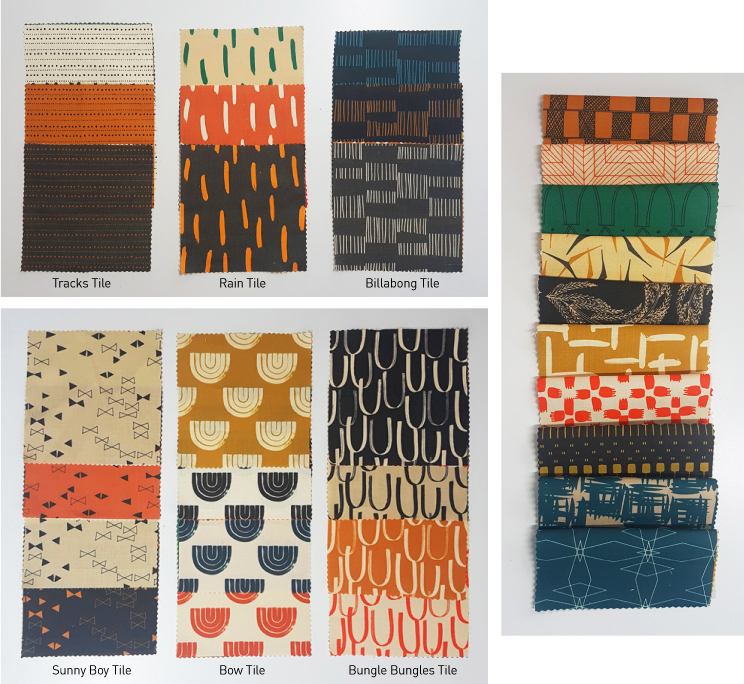We are thrilled to have a collection of prints designed by the talented Lily Fink available in the Artwork Library. Lily has created a collection of prints that pair back together in the most considered way, presenting earthy colours and organic shapes. We chatted with Lily to find out more about her experiences and inspirations in the design world.

Tell us about your journey to surface design, did you study in the field or are you a self-developed designer?
In all honesty I have been a Surface Designer my whole life. I spent many childhood hours creating patterns, painting fabrics, making my own tiles, tie-dying in my bedroom… However, I formally studied Surface Design at The International School of Colour and Design in 2014, graduating with 3 of the 4 Design Industry Awards. It provided a great base for developing my own skills and gave me the confidence I needed to back myself as a Designer. After graduation, I taught myself how to wrangle a computer to help convert the designs from inside my head into a printable, repeatable, professional format. There is a lot of self-development that goes into the discipline of Surface Design, but so many gems are borne of the process, that it is well worth it.
That sounds amazing, to have always known you were drawn to design.
I think of myself as a pattern designer and can’t say I was drawn to it, rather it was always just a part of me. I didn’t draw houses with chimneys and smiling suns when I was a kid, I drew dots, stripes and shapes. I have always, and will continue to be fascinated by all things adorned.
How do you seek inspiration for prints?
I tend not to seek inspiration but wait for it to find me. It never works for me if I try to be creative. Often, when I create a design, the finished product bears no resemblance to the original idea.
Do you plan a print, or does it evolve organically?
I have a general rough idea of what I want to create, however it never ends up where I expect. My Mother always told me the greatest creations come from mistakes and she is absolutely right. The creative process has a trajectory of its own most of the time, and the discipline is really allowing the process to take you where it needs to go.
You create a beautiful balance between organic line work and sharp geometries, the two styles are blended perfectly together via your base colour palettes. How do you go about selecting colour palettes?
Colour is so important, it can make or break a design, so it’s a crucial part of the process. It’s also probably the trickiest part, as there are just so many ways you can take it. I love colour, and different colours can create such different moods. For this collection, a collection drawn primarily from the land, and Australia in particular, I wanted my colours to be gentle and mellow, and a little bit dirty. There were to be no “Pops” or “Candy” colours in this collection.
What has been your favourite creative project to have worked on?
Probably my biggest creative buzz came from being involved with The Tiny Homes Foundation Project in my home town on the NSW Central Coast. The Foundation applied for and was granted land and permission from the local council to design and build four tiny houses, which were to become permanent tiny homes for four local homeless folk. In addition to that, many unemployed young people learned new skills and gained real, satisfying work. It’s an absolute credit to the council, the foundation, and the voluntary efforts of a lot of fabulous, generous people. My job was to style the houses, and to make them beautiful, comfortable homes. It was a great experience, and the little homes are now standing proud, and are loved.
What is your dream creative project?
My beautiful Stepmother took me to the ballet and theatre when I was a little girl, I loved the performance but it was the sets that really engaged me. If I had my time again and was brave enough perhaps I’d end up as a set Designer. My dream project would be to design fantastically over the top theatre sets.
What are you currently obsessed with in design?
Cakes, if you can call that design. Unexpectedly I have stumbled into the world of cake decorating. It’s fantastically good fun and you can do some beautiful things. The manual skills are challenging to learn, the science of baking is fascinating, and everybody loves you because there is always cake.

